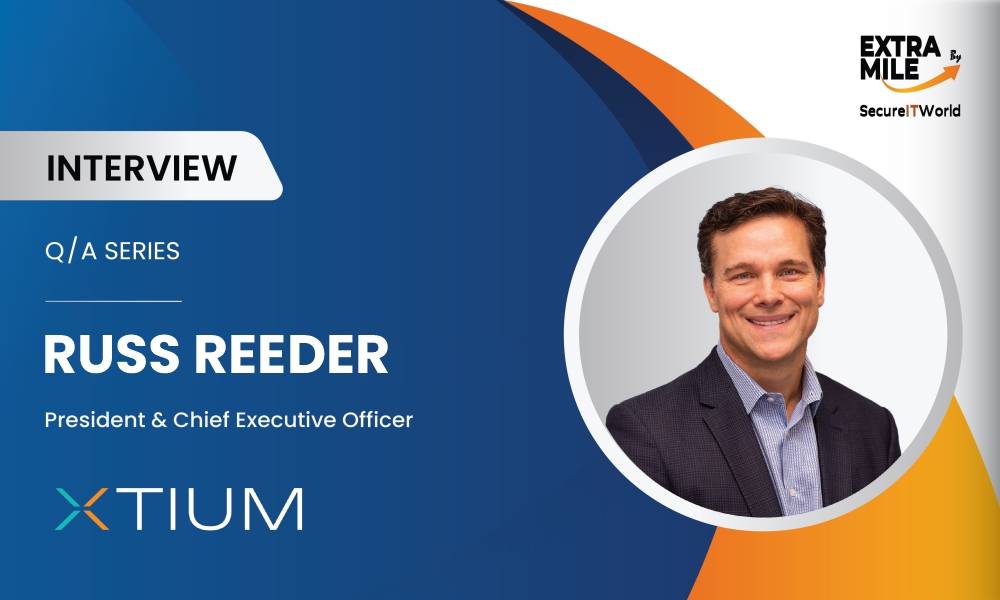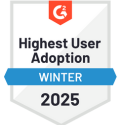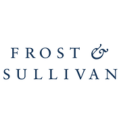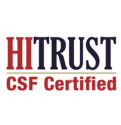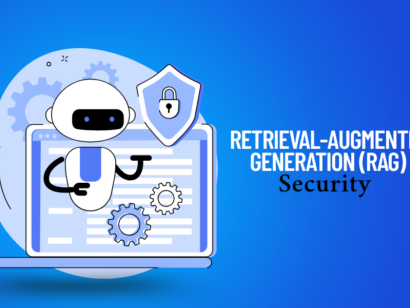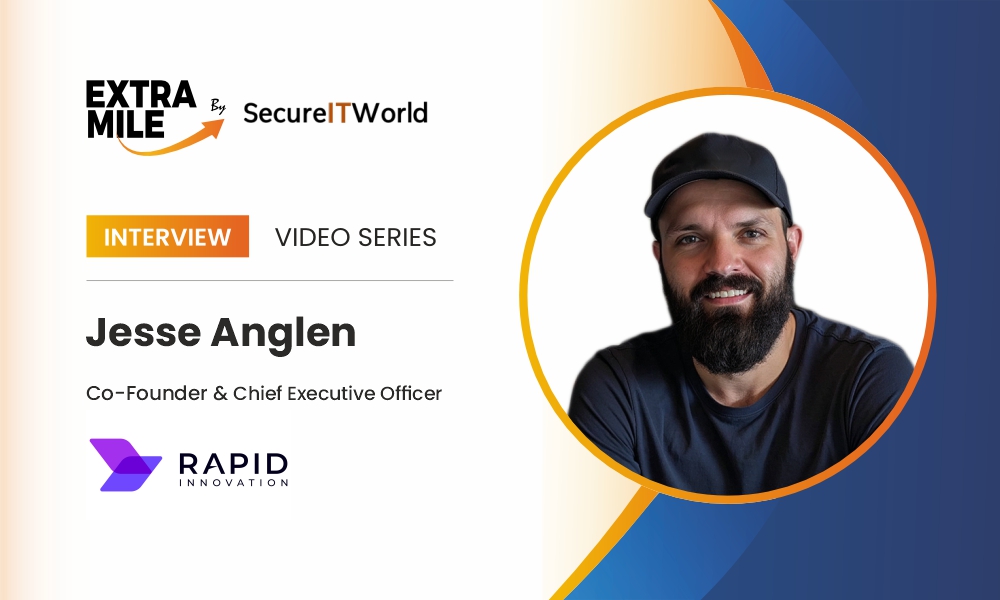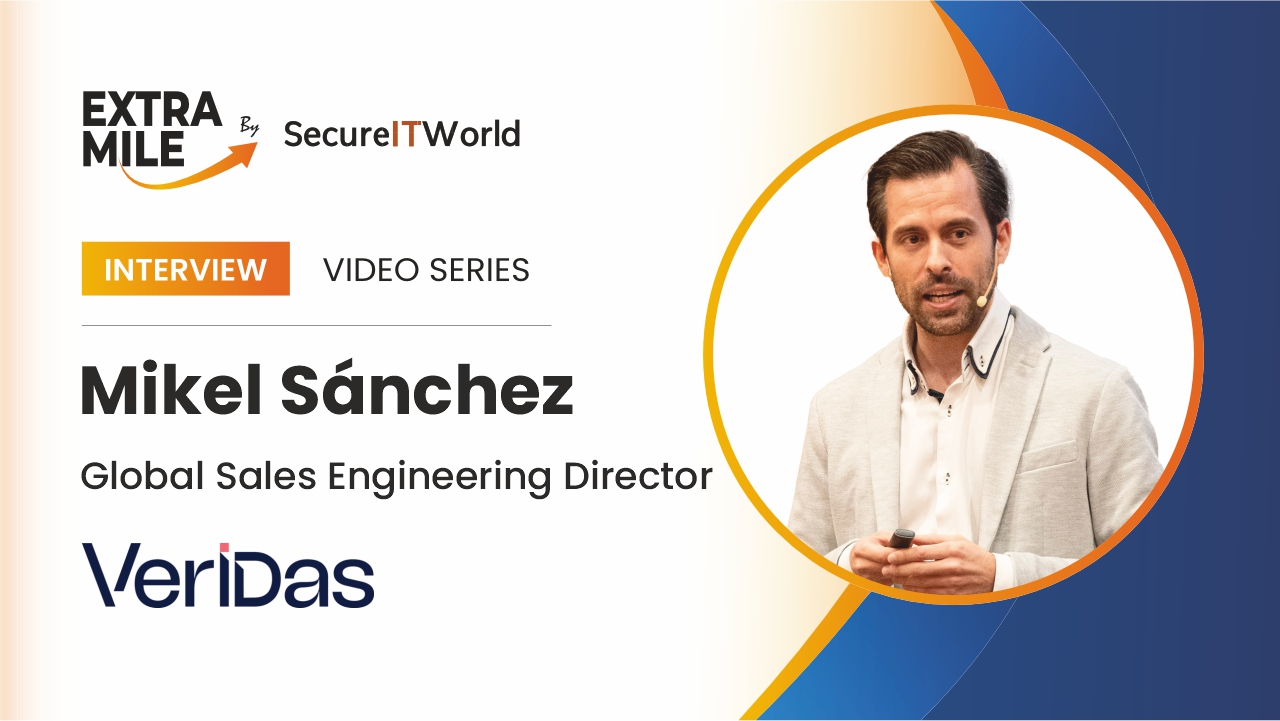Welcome to ExtraMile by SecureITWorld, an extensive interview series featuring insights from industry trendsetters, discussing the latest in technology, cybersecurity, marketing, and more.
For today’s conversation, we are overwhelmed to introduce our guest, Russ Reeder, President and Chief Executive Officer of XTIUM, a leading managed IT service provider. As a seasoned professional, Reeder believes in continuous learning and adaptability. With more than three decades of experience, he intends to build diverse and productive teams that can remarkably contribute to organizational growth and accountability.
In the discussions, we aim to gather insights on managed services, cyber threats, diverse industry needs, business transformation, and the future of managed IT services from one of the pioneers of the industry. Discover the latest takeaways of managed services and more in this informative session.
Hello Russell, thank you for joining us today!
1. With your extensive experience in the tech space, what insights or principles have guided your professional development over the years?
Ans. Throughout my tech career, I've found that it comes down to three core principles. First is simply never stop learning. Our industry moves at lightning speed, and the moment you think you know everything is the moment you start falling behind. I make it a point to carve out time each week to explore new technologies and approaches, especially in AI. The evolution from rule-based systems to today's generative AI models has been fascinating to witness and adapt to.
Second is genuine collaborative leadership. I learned early on that the most intelligent person in the room isn't the one with all the answers — it's the team that can bring diverse perspectives together and hold each other accountable. At XTIUM, our best innovations have come from those collaborative moments where different viewpoints collide. This is especially true in today’s AI era, where technical capabilities must be balanced with ethical considerations and business objectives.
The third principle is having a strategic vision beyond the technology itself. We all know tech, for tech's sake, doesn't drive value. But what truly matters is understanding how technology solves real business problems for our clients. That's the difference between being a vendor and being a strategic partner. This difference becomes even more critical as the world races toward AI, and where the real value comes from applying it to specific business use cases with clear ROI.
2. The combination of ATSG and Evolve IP led to the formation of XTIUM. How has this transition influenced your role, responsibilities, and leadership style?
Ans. This was a game-changer. Personally, it also forced me to evolve as a leader almost overnight. Previously, I might have been more hands-on with certain aspects of the business. I've had to step back and focus on orchestrating rather than executing. I still dig in to help with our biggest challenges, but aligning our teams across the organization to ensure everyone is rowing in the same direction is critical to our success.
What's been particularly challenging and rewarding at the same time is bringing two distinct company cultures together. I've become a bridge-builder, spending more time listening than talking. We have incredible talent on both sides, and my job is figuring out how to unlock that collective potential without disrupting what made each company successful in the first place.
I’ve learned the true value of communication. Today, I am deliberate about communicating our north star to everyone in the organization. That’s because alignment doesn't happen organically when you double in size overnight. You have to work at it constantly and make small corrections based on internal KPIs along the way.
3. Cyber threats continue to pose significant challenges in today’s digital landscape. How do threat detection and assessment play a role in helping organizations stay protected?
Ans. The reality is that people think they are secure based on siloed legacy security solutions. Today's threat landscape is more sophisticated than ever, and the old reactive security approaches no longer cut it.
We've invested heavily in building detection capabilities to identify anomalous behaviors before they become full-blown incidents. AI has been transformative here—our systems now analyze billions of data points to detect subtle patterns that are impossible for humans to spot. We're using advanced machine learning models that continually adapt to new threats, creating an immune system that strengthens with every attack.
Our key insight is that most threat actors follow predictable patterns. They execute them in increasingly creative ways. Our AI systems can now detect these patterns while they're still forming, giving us a crucial time advantage.
What keeps me up at night isn't the threats we know about; it's the ones we don't. That's why we've shifted from a purely technical approach to one that combines advanced AI with human expertise. Our security analysts are constantly picking apart new scenarios, asking "what if" questions that help us stay ahead of emerging threats. This human-AI collaboration gives us capabilities that we could not achieve alone.
For our clients, especially in regulated industries, this means they can focus on their core business rather than constantly looking over their shoulders for the next cyber threat.
4. XTIUM serves a range of industries, including healthcare, retail, and finance. How does the company identify the unique needs of each sector and tailor its services accordingly?
Ans. We learned quickly that a one-size-fits-all approach doesn't work across different industries. A financial services institute like a bank has fundamentally different priorities than a retail chain or a hospital network.
Our approach starts with a deep immersion in each industry we serve. We ensure our teams understand the clients and their industries’ needs. This approach gives us a grounded understanding of the operational realities. It may sound simple, but you'd be surprised how many tech companies skip this crucial step.
What's interesting is how AI is reshaping each of these industries in unique ways. We use AI-driven analytics to optimize infrastructure for more innovative, faster operations by analyzing data, identifying patterns, and providing actionable insights that help organizations improve efficiency and decision-making. We also use AI for proactive threat detection and expert threat remediation. We offer AI advisory and consulting services to help organizations assess their AI maturity, identify gaps, and develop strategies to integrate AI effectively into their operations.
But none of this matters if we don’t understand the industry. That’s why, in healthcare, we've had to become experts in regulatory compliance like HIPAA while ensuring critical systems remain available 24/7. That’s because lives depend on it. In retail, we've focused on creating seamless digital experiences that complement in-store shopping. And in finance, security and transaction speed are paramount considerations in everything we design.
This industry-specific knowledge has become one of our most substantial competitive advantages. Our clients don't have to waste time explaining industry basics to us. Instead, we come to the table already speaking their language.
5. Managed services have surged in popularity with the shift to hybrid and remote work. What hurdles do you commonly see when delivering or adopting these services?
Ans. The shift to remote work revealed something interesting: many organizations had been running on institutional knowledge and manual processes that couldn't function in a distributed environment.
The biggest hurdle we encountered wasn’t technical but cultural. There's often resistance to outsourcing what teams consider their responsibilities. We've learned to address this head-on by positioning our services as augmentations of internal capabilities rather than replacements.
Another challenge is the expectation that transformation will happen instantly. I often tell clients that managed services aren't a magic switch you flip. They're more like a journey with distinct phases. We've gotten much better at setting realistic timelines and celebrating incremental wins.
Security concerns have also intensified with distributed workforces creating numerous new access points and spreading the threat attack surface. We've had to help our clients rethink their security architecture to adapt to this new reality where the traditional network perimeter has essentially disappeared.
6. The global IT services market is now valued at $1.51 trillion. In your view, what have been the key drivers behind this significant growth?
Ans. That figure shows that the days of viewing IT as just a cost center are over. Tech has earned its place at the strategic table.
The pandemic was the ultimate accelerator. Companies compressed what would've been 10 years of digital evolution into a year and a half. Organizations dragging their feet suddenly found themselves in a sink-or-swim situation. This created an enormous wave of demand as companies scrambled for expertise and service solutions to help navigate the digital shift.
Meanwhile, the security landscape became a whole different animal. With everyone moving to cloud services and employees working from home, the attack surface exploded overnight. Most companies looked at this new reality and quickly realized they couldn't handle these sophisticated threats alone. That's driven this massive migration toward managed security partnerships, where companies like us are now seen as partners.
The talent situation hasn't helped either. We're facing this critical shortage of tech professionals that keeps getting worse. When you need specialized cloud architects or security experts, you compete with everyone else for the same limited talent pool. So, the math becomes simple: why fight that battle when you can tap into that expertise through a service model?
The financial piece is equally compelling. Converting those massive upfront tech investments into predictable monthly expenses simplifies budgeting. Every CFO I talk to appreciates having that visibility into their technology spend, especially with economic conditions changing so rapidly.
7. In a business environment where transformation and rebranding are critical for staying competitive, what best practices help ensure a smooth transition and mitigate risks?
Ans. Having just gone through this with XTIUM, transformation is much messier in practice than in theory. The first lesson we learned was that overcommunication is impossible. People need to hear the same message multiple times in different ways before it truly resonates.
We also discovered the power of involving people early in the process. When team members help shape the transformation, they become its strongest advocates. We created cross-functional teams with representatives from all levels to help design our new identity and operating model.
Another critical practice is what I call "ruthless prioritization." During transformation, everything can't be a priority. You’ve got to make tough choices about what happens now versus later. We used a simple framework: what will significantly impact customer experience and business results?
Finally, you need to accept that not everyone will make the journey. Some of your best performers under the old model might struggle with the new direction. Being transparent about expectations while providing support for the transition is essential.
8. Given the rapid pace of technological innovation, how do you envision the future of the IT and MSP industries? What emerging trends and best practices will lead the way?
Ans. We're entering an era where the traditional boundaries between internal IT and external service providers are blurring. The successful MSP of the future won't be distinguished by what technology they have. It'll be about how they apply that technology to solve specific business problems.
AI and automation will dramatically transform service delivery models. We already see this with predictive maintenance and self-healing systems that can resolve issues before clients notice them. This shift from reactive to proactive service will accelerate.
The cybersecurity landscape will grow more complex, especially as nation-state actors become more prominent. It will see MSPs taking a more strategic security advisory role beyond technology implementation.
Industry specialization will become even more critical. The days of being a generalist MSP serving everyone will give way to deep vertical expertise. We've positioned XTIUM to be the go-to partner in specific industries where we deliver truly transformative outcomes.
AI will keep revolutionizing everything from predictive maintenance and cybersecurity to customer support and operations. We’ll see more proactive, self-healing systems that address issues before clients even notice them.
Ultimately, the most successful players will be the ones who can translate technology into measurable business impact for their clients. That's the future we're building toward at XTIUM.
Discover More In-depth Interviews:

